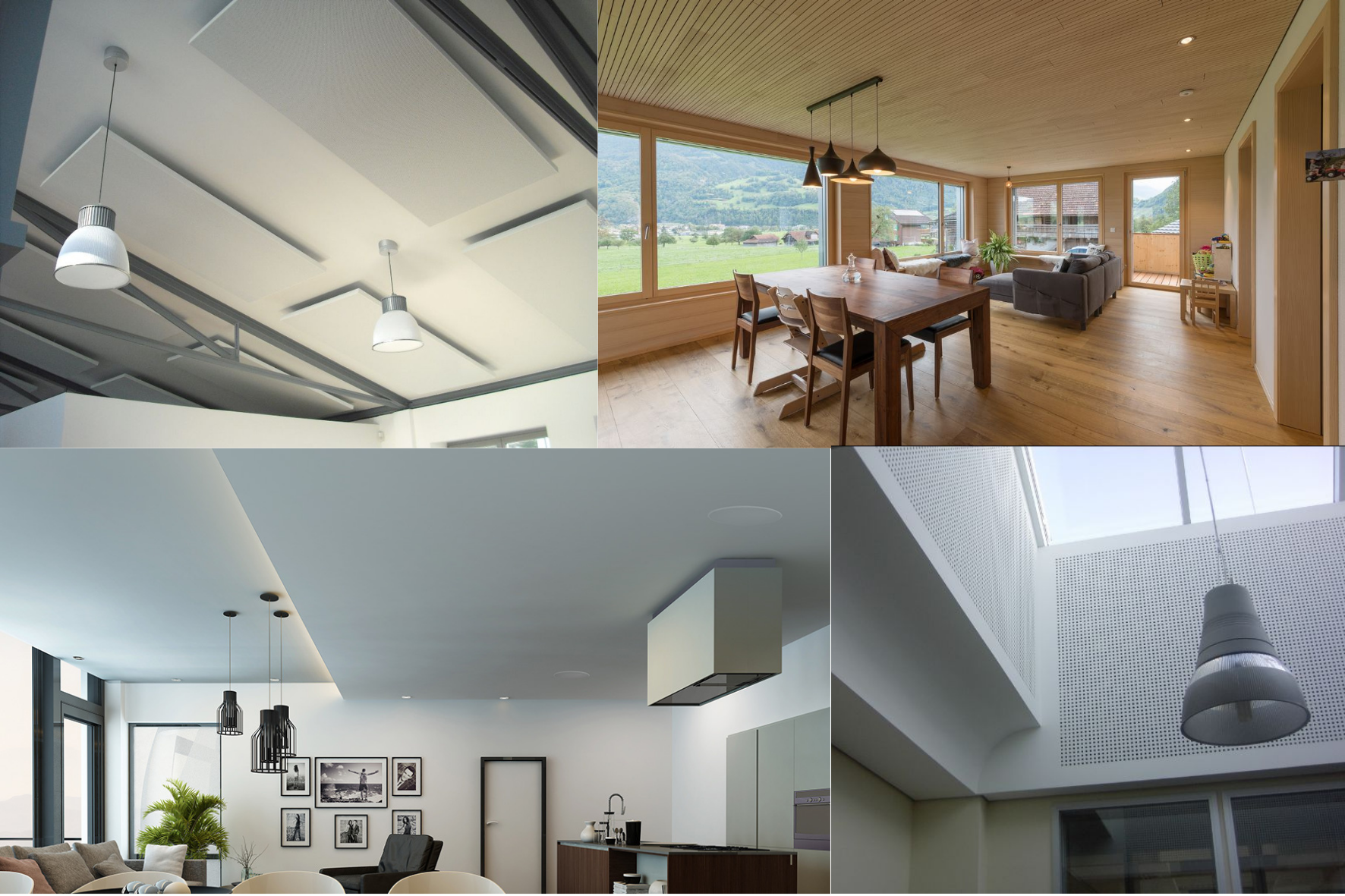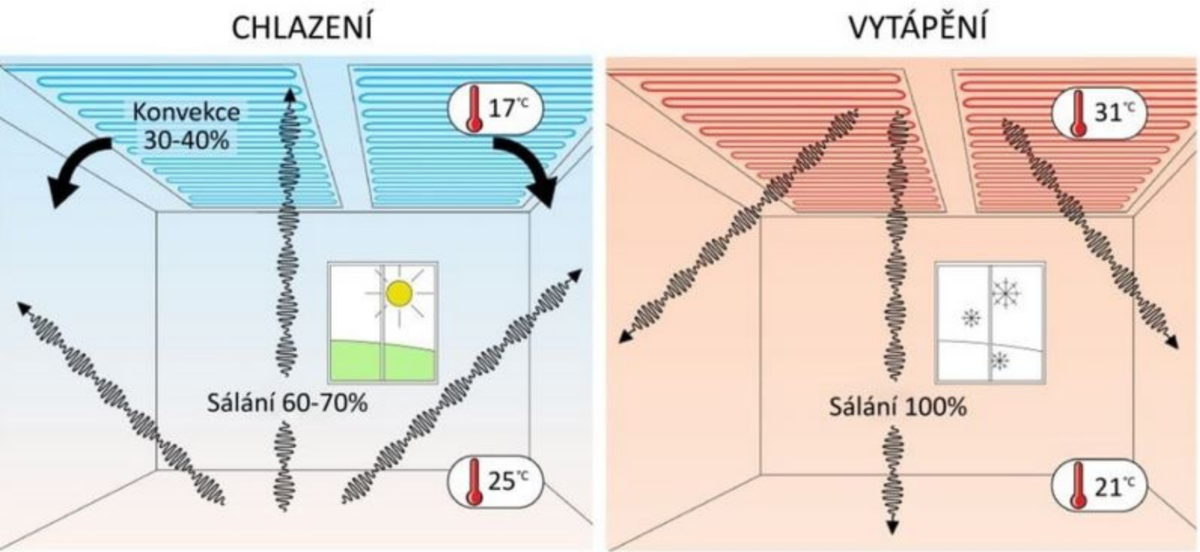
Ceiling heating? You won't want anything else
The idea of radiant heating through the ceiling is still difficult for most of us to imagine today. After all, we have heard since childhood that heat escapes to the ceiling and at home and in most other buildings we are used to heating with radiators or floor heating. Let us lead you out of error.
The principle of operation of radiation
Let's start by explaining what we should actually imagine under the term radiation. Radiant heating is essentially the transfer of energy through radiation. Such radiation is invisible to the human eye because it moves in the infrared part of the light spectrum. Nevertheless, a person perceives it in the form of heat.
The intensity of radiation depends on the surface temperature of the source. The higher the temperature of the source, the more intense the radiation and at the same time acquires a greater range. When a sufficiently high intensity is reached, the radiation even moves to the – for humans – visible part of the infrared spectrum and the energy source begins to glow. A typical example is a light bulb that both serves as a light source and radiates heat.

Heating systems operating on the principle of radiation can use the invisible part of the infrared spectrum very effectively, even in rooms with a height of up to 30 meters. They have a fairly high surface temperature, due to which they emit heat passing through the air to solid objects in the room, but also to the surface of the human body. The surface of these objects then heats up naturally and mainly more evenly with significantly lower energy consumption. With radiant heating, people feel the temperature in the room up to 3 °C higher. This guarantees a pleasant feeling of warmth despite the lower temperature in the room, and up to 45% of energy costs can be saved on heating. In the summer months, radiant systems can use cold water to cool the room without the burdensome strong air flow that can bother residents with drafts that we know from classic air conditioners.
Advantages over other types of heating/cooling
In addition, the principle of radiant heating demonstrably reduces the dustiness of the environment thanks to much lower air circulation. This type of heating also has its benefit in terms of air humidity in the room. By passing through the air in the same way as rays from the sun, the infrared rays do not dry out the air.
However, the health benefits are also not negligible, as the infrared radiation emitted from heating panels is very similar in properties to the sun's rays and is one of the most natural types of heat for humans. You will certainly recall the use of infrared radiation for regeneration and treatment, for example, in the form of infrared saunas, infrared lamps for cosmetic purposes, etc.
The choice of panels with radiant heating is suitable both for new buildings and for renovations, as the installation is simple using a mounting system. The solution is suitable for all objects that are permanently inhabited. However, it is not suitable for recreational or other similar buildings that are used only occasionally and where traffic is regularly shut down.
Approximate prices of topně cooling ceilings
1x dew point temperature sensor incl. accessories – from 6.325 CZK without VAT (to each room)

